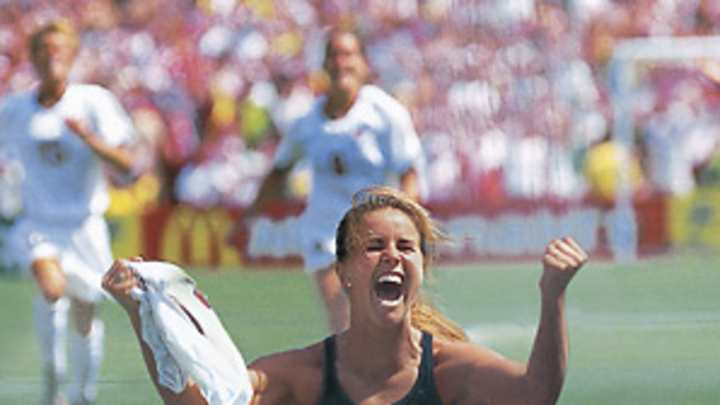Can WPS recapture glory of 1999?


Women's soccer would love to party like it's 1999. Ten years ago, the U.S. national team won its second Women's World Cup in front of a sold-out crowd at the Rose Bowl.
"As a soccer player, you watch the men's World Cup on TV, hoping that you'd be able to play in a stadium and a venue and have the crowd support that you see on TV," said Mia Hamm, who used that year as the springboard to becoming perhaps the best-known women's athlete of her generation, "and that's exactly what we had. It kind of exceeded all our expectations."
Ten years later, a lot has changed for women's soccer in the U.S. Hamm, of course, is retired, as are many of her cohorts from that squad, though a few, including iconic, evergreen Brandi Chastain, soldier on in Women's Professional Soccer. A few others, such as Shannon Boxx and Abby Wambach, are players who were first discovered in WUSA, the league that the glory days of '99 helped spawn before it uncerimoniously folded a few years later.
Those players offer something of a direct comparison to the now defunct league that may not jibe with the common perception. Simply put, WPS is a better league than the WUSA ever was, with more skilled individual players, a wider variety of styles and a higher quality of soccer. "As a fan of the game, and a former player, I think the level of the game is extremely high," Hamm said about WPS play.
It's not just Marta's slashing dribble runs or Kelly Smith's penetrating passes -- in every area of the field, WPS showcases players with a superior touch on the ball, and control and technique that was rare in the WUSA.
Yet it's also plainly true that in many ways, WPS games feel small-time. That's partly due to the fact that the WUSA burned through money at an alarming rate, trying to become a big-time sports league by acting like one. WPS is trying to be more modest and rational about spending -- but it's inevitable, therefore, that it comes off somewhat as a budget-rate WUSA. Marketing and publicity budgets are small for WPS, so getting the word out about how good of a league it is has become more difficult.
The league's overarching strategy, though, which is to present everything in as positive a light as possible, may actually backfire. Trying to be so family-friendly as to be completely inoffensive means that the players -- who are often reduced to spouting sporting cliches -- can seem somewhat void of individual personality. They don't even trash-talk. Potential dramatic storylines, like BrianaScurry vs. Hope Solo, for example, fell flat when Scurry was unable to secure a starting goalkeeper position in WPS.
A bit of tension has also been sucked out of the current WPS standings because Marta's team, the Los Angeles Sol, has such a clear lead in the standings. "I don't think the Sol should have to play worse to allow other teams to catch up," Hamm said. She indicated other teams should improve and that, in fact, she saw a marked advancement in all the teams since the league first kicked off.
However, Hamm also admitted she was inclined not to dwell on any negatives of the new league: "I want to continue to look at it as postively as I can." That's well and good, and Hamm shouldn't have to take on a role of chief critic, but there are harsh realities to the women's game that simply can't be glossed over.
The biggest of these concerns is what '99 was really about. As much as the players involved hate to admit it, the throngs of crowds and the squealing adulation marked that year as one in which women's soccer rode a wave of trendiness. That eventually dissipated, as fads inevitably do. The current league could be many times more of a hit than it currently is and yet it would still suffer by comparison to the remarkable level of adulation the sport generated back then. Lightning in a bottle is extremely hard to capture, and the league would probably be better served not to try for that.
Instead, '99 should be celebrated for being a rare and wonderful high-water mark, one that can be respected without crushing the new league with the weight of replication. Ten years on, it's clear women's soccer doesn't have the crowds and attention that it once did. Instead, with the mere presence of WPS, it has something that didn't exist back then: a professional club environment where players can ply their trade and improve.
Hamm pointed out that as a mother of two girls, it meant a lot to her that they would have options and be able to continue in the sport they love as professionals one day. Maybe that's not worth a whole party, given the current economic climate, but it deserves a cheer.
